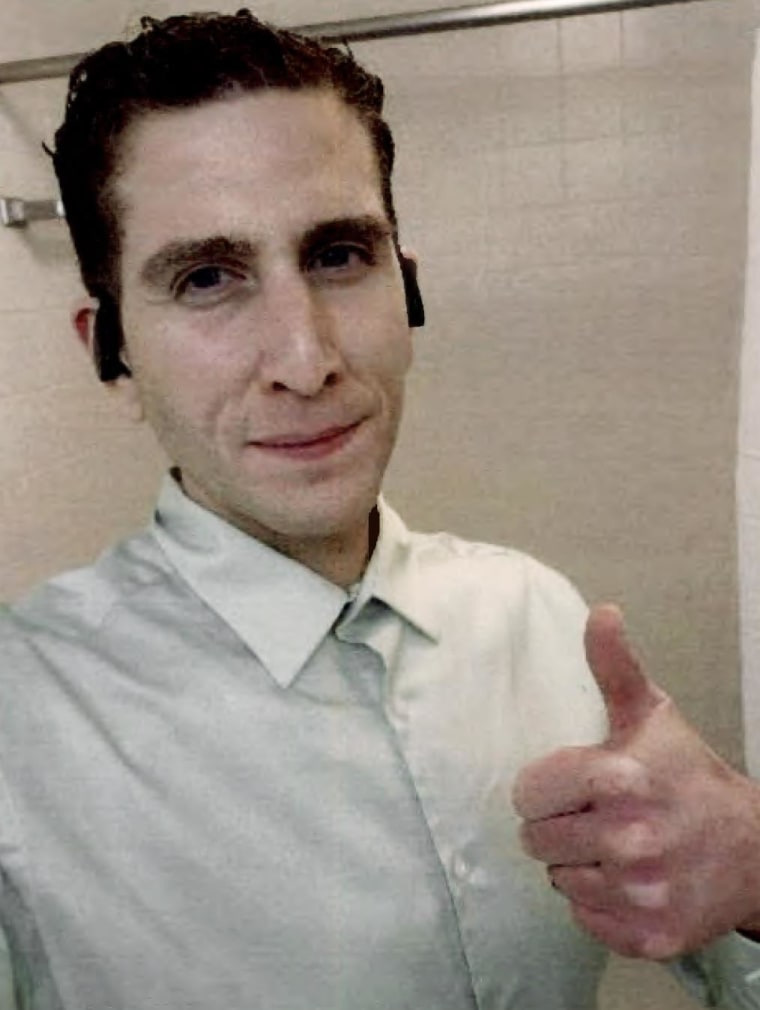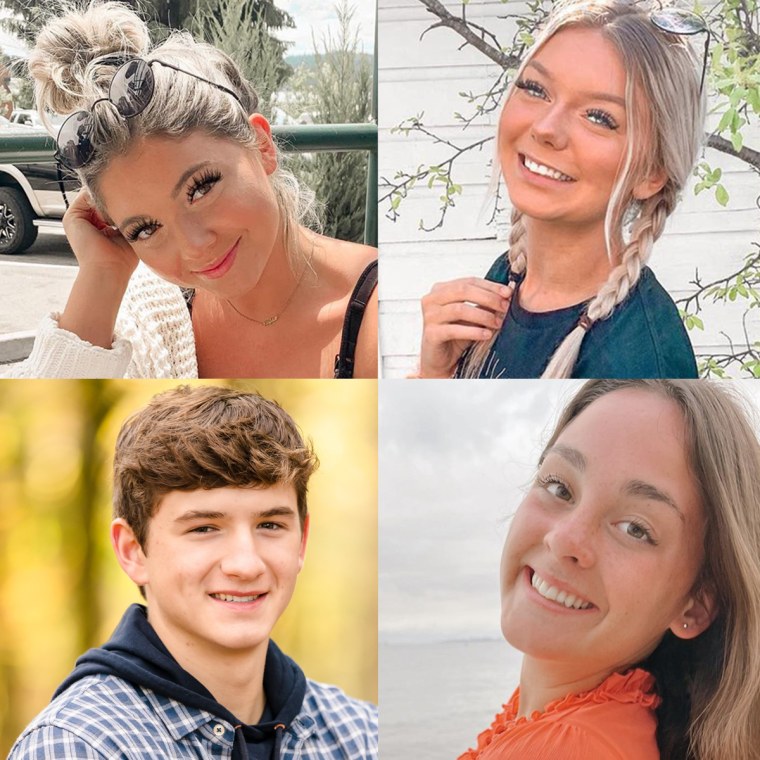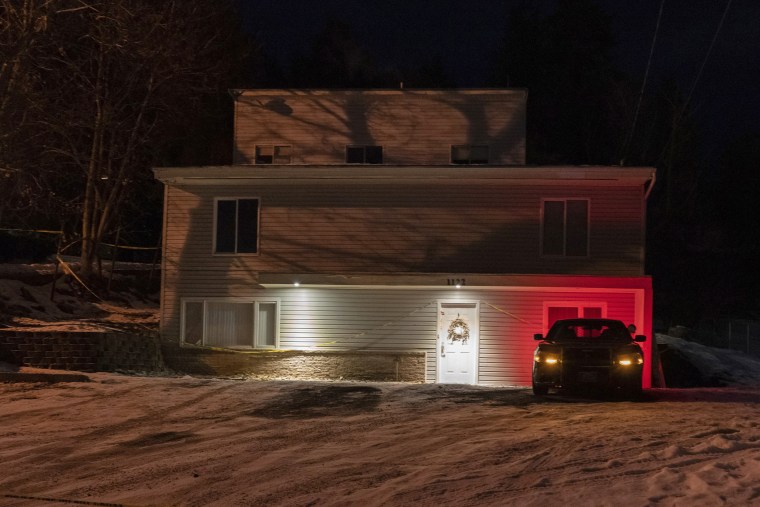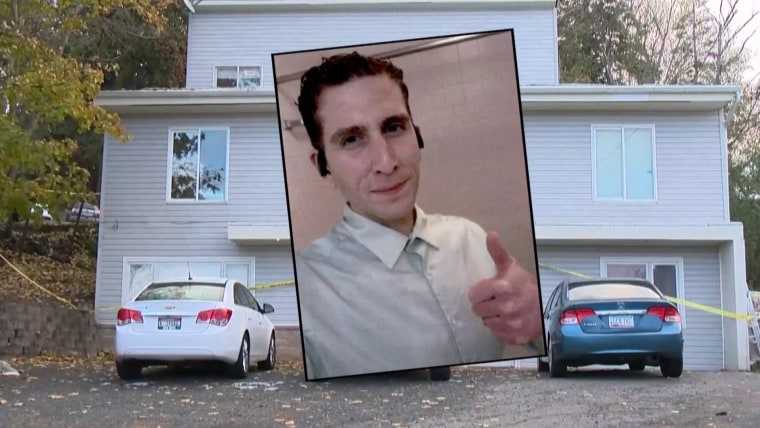A smiling selfie of Bryan Kohberger with a thumbs-up pose taken hours after four University of Idaho students were killed in 2022 may be introduced at his murder trial, prosecutors said in a series of court filings released Wednesday.

The photo, which Latah County prosecutors say was time-stamped at 10:31 a.m., roughly six hours after the students were fatally stabbed at their off-campus home, would help a jury determine whether he has "bushy eyebrows" as the suspect was described as having by a surviving roommate, prosecutors said.
"I just remember, like, bushy eyebrows. That's all I could think about," the roommate, Dylan Mortensen, later told investigators, according to court documents. Mortensen had described how she opened her door some time before 4:19 a.m. on Nov. 13, 2022, and saw a figure walking past her in black clothing and a ski mask that covered the intruder's forehead and mouth.
Police have said they believe housemates Madison Mogen, 21; Kaylee Goncalves, 21; and Xana Kernodle, 20; as well as Kernodle's boyfriend, Ethan Chapin, 20, were fatally stabbed after 4 a.m.
Mortensen told investigators she was standing about 3 feet from the person, adding that she was "probably still a little bit drunk. I just woke up. I don't remember fully," according to the prosecution's filing.
Prosecutors added that Mortensen is "credible and competent" to testify, and that photos of Kohberger are relevant and should be admissible.
Kohberger's defense team is seeking to exclude any evidence referring to "bushy eyebrows" at his trial, arguing it would be "unfairly prejudicial."

"If evidence of 'bushy eyebrows' is presented to the jury, the jury might well believe that Mr. Kohberger is guilty simply because of 'bushy eyebrows,'" his defense wrote in a filing in February.
His defense team has also questioned Mortensen's recollection of events, writing in its filing that she has "acknowledged that her brain might have been fuzzy due to alcohol and sleepiness when she saw the intruder."
The defense also said there were inconsistencies in her statements to investigators.
"Several weeks after the murders, D.M. thought that the person she saw was a fireman," the defense wrote, referring to Mortensen. "In her mind, D.M. thought that the intruder went out of the back sliding door, but she doesn't know 'if he actually went out the back door.'"
Goncalves' family wrote on their Facebook page that the selfie of Kohberger was "disgusting," but they hoped the latest court documents indicate "the truth is finally coming out."
Lawyers for Kohberger, 30, who was a doctoral student of criminal justice at nearby Washington State University at the time of the killings, have denied any involvement.
But Latah County prosecutors say they want to offer other evidence at Kohberger's trial, which is scheduled for August in Boise, following months of delays as the prosecution and defense clash over what should be admissible. A judge has yet to rule on the various requests.
Possible murder weapon
Prosecutors said Kohberger's Amazon activity shows he purchased a Ka-Bar knife eight months prior to the murders, according to the newly released court documents.
Investigators had gotten a search warrant that allowed law enforcement to seize his "customer click activity pertaining to knives and accessories" from Amazon.
An investigator previously described finding a tan leather knife sheath on the bed next to Mogen's body.
"The sheath was later processed and had 'Ka-Bar' 'USMC' and the United States Marine Corps eagle globe and anchor insignia stamped on the outside of it," a Moscow police officer wrote in his report. "The Idaho state lab later located a single source of male DNA (suspect Profile) left on the button snap of the knife sheath."

The DNA is a statistical match to Kohberger, according to investigators. The murder weapon, believed to be a large fixed-blade knife, has not been recovered, Moscow police have said.
In a court filing last week, Latah County Prosecutor Bill Thompson wrote that a defense expert's disclosure revealed that Kohberger's lawyers won't challenge that the DNA found on the sheath belongs to the suspect.
"The defense plans to argue the DNA on the knife sheath does not prove Defendant was ever at the crime scene and the knife sheath itself could have been planted by the real perpetrator," Thompson wrote.
A gag order prevents those involved in the case from speaking publicly, and it's unclear how the defense may respond to the prosecution’s characterization of its defense expert.
Defendant's autism defense
If found guilty, Kohberger could face the death penalty.
His lawyers, however, have said they would like to argue that he should not be put to death because he is in the autism spectrum and it would violate his constitutional rights.
They also said he has obsessive-compulsive disorder, and his reactions at trial may be misinterpreted.

"For example, he does not show emotion on his face, he has a flat affect, he sits very still and holds his hands in the same position," court documents say, adding that he has a "piercing stare," a stiff body posture and uses repetitive language.
Prosecutors responded in their latest filing that Kohberger was shown to be diagnosed with the least severe form of autism that comes "without accompanying intellectual or language impairment," and that he has failed to show his diagnosis "would in any way make him less culpable for murder."
But his defense contends that Kohberger routinely went on drives at night alone, including at the time of the murders, and that cellphone tower data would prove he was miles away from the crime scene.
Surviving roommates' phones
Kohberger's defense also responded to a motion by prosecutors seeking to have text messages between Mortensen and another surviving roommate, Bethany Funke, included as evidence at trial.
The texts between Morternsen and Funke from 4:22 a.m. to 4:24 a.m. indicated increasing panic as they failed to reach their housemates by phone.
But Kohberger's lawyers claim the texts in the prosecution's motion were selective, and the defense in its filing presented further evidence showing that the roommates were calling and using their phones beginning at 7:30 a.m. until 911 was dialed on one of their phones at 11:56 a.m.
The roommates were on Instagram, Snapchat and other social media, although the defense's filing doesn't detail the extent of their activity or if anyone picked up when they called other people.
The defense is now asking the judge to review the fuller picture of the roommates' conversation to determine whether the texts should be excluded from trial because the messages are hearsay.
The surviving roommates "texted each other a handful of times and then they were in the same bedroom," the defense's filing said. "They were together with the ability to talk to each other. They were not asleep for 8 hours."
Steve Goncalves, Kaylee Goncalves’ father, told NBC News earlier this week that while the family was at first surprised that 911 had not been called sooner, he doesn’t blame the surviving roommates for how they acted.
“When you start looking at all the facts and you start seeing everything, you realize that the girls just went to bed that night thinking something was weird, something was strange, but they didn’t have a full extent of everything that was going on,” he said, adding, “It’s hard to have positive things when you have four people that are killed, but it could have been a lot worse.”
Kohberger is due in court on April 9 for another motions hearing.


